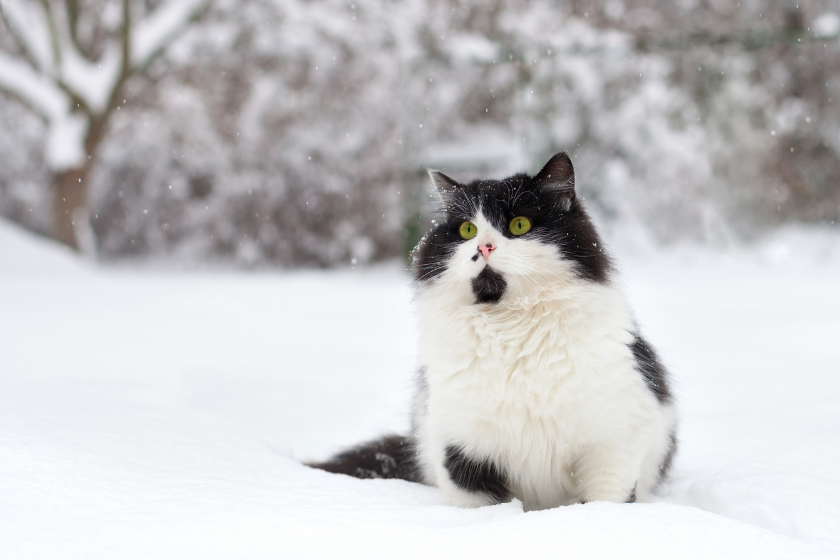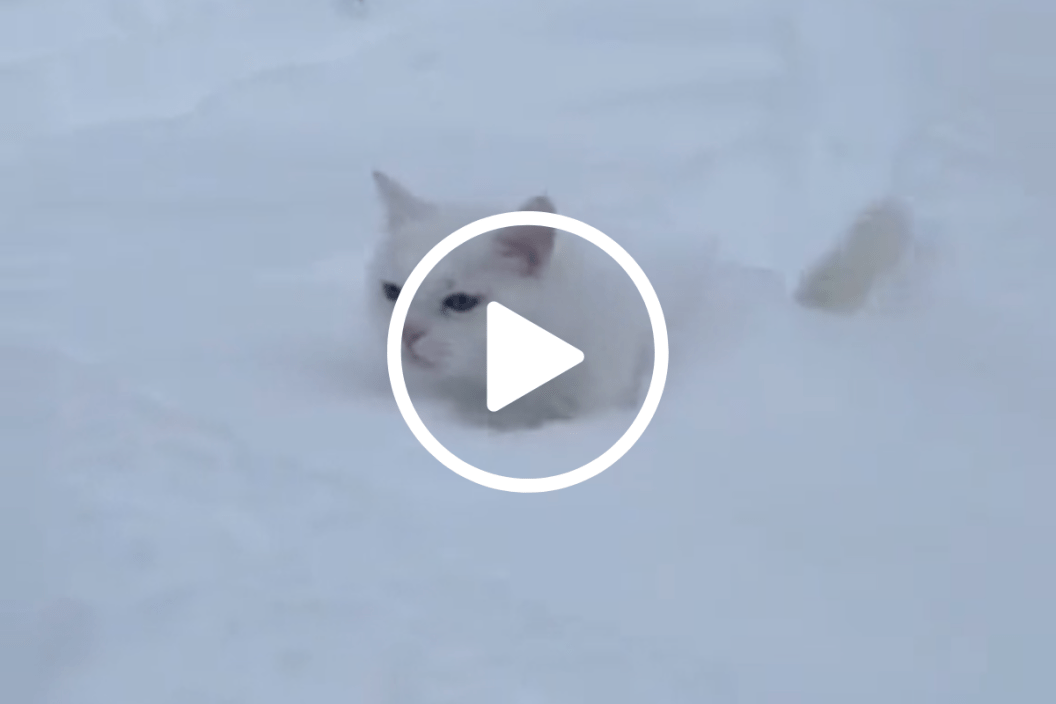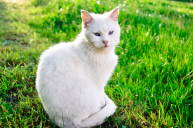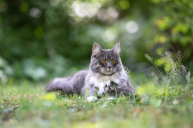?Most cats despise water. But do cats like snow?
As soon as a single raindrop falls on most cats' heads, they race inside as if they will melt like the Wicked Witch of the West. Our indoor/outdoor cat comes running in doing her patented "paw-fling walk" every time she steps out into the rain, which I'm sure other cat owners have experienced as well, especially if you don't have strictly indoor cats. When winter hits, that rain quickly turns to snow, which begs the questions: do cats actually like snow? That fluffy white stuff may look interesting, but it's chilly, and cold temperatures really aren't something that most cats are excited about.
Do Cats Like Snow?
@simba.bne
When cold weather hits, most cats prefer to be warm, cozy, and out of the elements. However, some cat breeds were made for winter weather, like Maine Coons, Russian Blues, Norwegian Forest Cats, Himalayans, Persians, and Scottish Folds. They may be more likely to love playing in the snow as their dense coats keep them warm thanks to years of those breeds adapting.
However, there are other breeds that enjoy a romp in the snow every now and then. The kitty in this TikTok video, named Simba, is loving every minute of his time in the snow. Simba is a Persian hybrid and pounces through the snow with ease. If you are introducing your cold-weather cat to the snow for the first time, make sure that it is brief and that you are close by to pick them up if they get into a spot they cannot get out of. A cat's exposure to the snow should be brief, and they should have access to a heat source so they do not get hypothermia. In addition, cats should really never be out in the middle of heavy snowstorms since their risk of exposure increases as temperatures decrease. Also, visibility is low, which increases their risk of getting injured either by a car that did not see them or another animal.
How Cold Is Too Cold In Winter?

Outdoor cats and feral cats can get too cold as the temperature drops. According to Animal Humane Society, a cat's paws can get frostbite in colder climates with freezing temperatures and heavy snowfall. Frostbite can lead to kitties losing limbs or their ears.
To keep your cat safe, it is best to bring them inside where they have fresh water and a warm place to sleep. Unfortunately, our cat, Bandit, is not a fan of staying inside in the winter months. So when she does go outside, we make sure there is no ice or frost on the ground and that it's not actively raining or snowing. She also only goes out for a short time and generally sticks to our covered porch, which acts as an outdoor shelter from the cold air and the elements. Once she comes back in, she gets a warm towel and plenty of snuggles. She also gets to warm up by the fireplace on her cat bed most days; it's a nice compromise. She feels like she gets her adventure in for the day, though abbreviated, and she doesn't meow at me all day long to go out. And believe me, she gets quite persistent.
According to The Rescue Vets, cats should not be outside when the temperature dips below 45 degrees Fahrenheit. Temperatures near or below freezing can harm a cat's paws, tails, ears, and paw pads. Even long-haired cats will begin to lose body heat quickly in frigid temperatures.
Indoor cats are not acclimated to cold weather and prefer a consistent temperature. Generally, temperatures should be between 50-60 degrees to keep an indoor cat warm. However, most will want to snuggle by a space heater, on a heating pad, or by the radiator. Indoor kitties are happier when the temperature sits closer to 70 degrees.
Older cats are more sensitive to cold temperatures than their younger counterparts. As cats age, they do not regulate their body temperature as well, so make sure your senior cat has access to cozy blankets or a heated cat house.
Does your cat like the snow? Tell us on our Wide Open Pets Facebook page.




